Las Palmas de Gran Canaria is proud to be able to offer cultural and leisure activities throughout the four seasons of the year. The year begins with the frenetic activity of the Canary Islands Music Festival, organised by the Canary Islands Government, which offers an excellent programme of classical music. The headquarters of the Festival are situated at the Alfredo Kraus Auditorium.
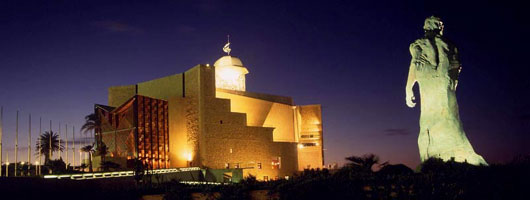
Carnaval is celebrated during the month of February. The city, which is accustomed to receiving tourists all year round, decks itself out in colour and rhythm. Visitors are able to enjoy the outdoors atmosphere of Carnival due to the excellent temperature at this time of the year. Highlights include the Election of the Carnival Queen and the Drag Queen along with the murga and comparsa competitions of singing groups and bands. The Gran Cabalgata parade and the huge crowds of people visiting the outdoor stalls and bars at night are spectacular.
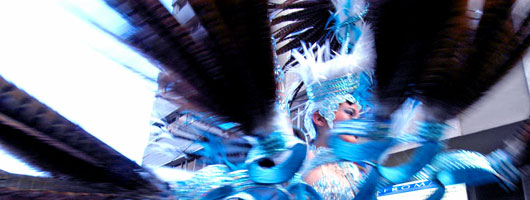
Once the spirits of Carnival leave the city the International Cinema Festival takes over. Film directors, actors, scriptwriters, producers and distributors contribute to the special climate. The Festival presents films of an independent type to the fans of the seventh art. The Lady Harimaguada prize is awarded to the best film.
The Alfredo Kraus Opera Festival is also held during the first months of the year. The Festival, which is of great prestige, is held in the Cuyás Theatre.

Semana Santa (Easter) in Las Palmas de Gran Canaria is celebrated with several processions of religious statues of historical and artistic value from the parishes of Triana and Vegueta and from the Cathedral.
Corpus Christi, in June, is another religious tradition of Las Palmas de Gran Canaria, when the streets where the procession passes around the cathedral are covered with beautiful carpets made of flowers.
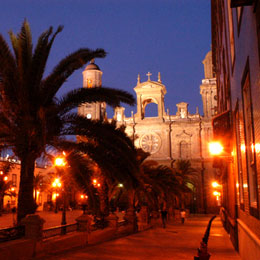

The Fiestas Fundacionales (San Juan) commemorate the founding of Las Palmas de Gran Canaria and are held in the month of June. The city takes on a festive note with a programme covering scenic arts, concerts, children´s actrivities and institutional acts. The traditional bonfires on the eve of San Juan in different parts of the city and the dip taken by thousands of people at the las Canteras beach are two very popular activities.
Summer begins with the Dance and Theatre Festival which is held during July and August. The different types of entertainment are all very inviting and give continuity to the cultural events by offering a stable programme throughout the summer.


A Jazz Festival is also held in July and Santa Catalina Park and the Alfredo Kraus Auditorium fill to the sounds of the best international jazz festival celebrated in the archipelago. Las Palmas de Gran Canaria is one of the festival’s headquarters.
In the district of La Isleta there is the feast day of Nuestra Señora de Carmen (Our Lady of Carmen) in the month of July. The most popular event is the sea procession of the statue of the Virgin Mary.
The Fiesta de San Lorenzo is held in the district of the same name. It is known for the procession and fireworks that are lit in the early hours of August 10th, one of the largest fireworks displays in the Canary Islands.

In Vegueta the procession of la Romería del Rosario, on October 3rd, is quite a tradition. The participants, dressed in traditional costumes, leave from San Telmo Park and go to the Parish Church of Santo Domingo in Vegueta, where the residents decorate the balconies and façades with traditional objects and items.
In La Isleta there are also fiestas held in October, the Fiestas in Honour of Nuestra Señora de La Luz, patron saint of the Port and honorary Mayoress of Las Palmas de Gran Canaria. The fiestas commemorate the victory against the attack of the British admirals Francis Drake and John Hawkins in October 1595.
In autumn the Festival de Zarzuela (traditional Spanish operetta) is held. It is organised by the Canary Islands Friends of the Zarzuela.

The festivities of the year come to an end with the Christmas celebrations directed towards the children of the island. The varied programme includes the traditions of the nativity scene, Christmas trees, carol singers, concerts and, of course, the long-awaited parade of the Three Wise Men, who ride through the streets on their camels.
Las Palmas de Gran Canaria was founded on June 24th 1478 by the Castilian captain Juan Rejón, who began the conquest of the island of Gran Canaria from this territory located at the bottom of the Guiniguada ravine. This place, which was originally called El Real de Las Palmas, is located in the present-day historical area of Vegueta.


The city became a very active mercantile centre due to the sugar cane trade, which, however, also drew dangerous pirate attacks which occurred up to the eighteenth century. In October 1595 the city thwarted the English attack under the command of Francis Drake and John Hawkins. Four years later the Dutch, under the command of Van der Does, sacked and burned the city.
The construction of the Puerto de la Luz port in the second half of the nineteenth century brought the city to the doors of its great modern transformation, when Las Palmas de Gran Canaria became a truly tri-continental platform.
Las Palmas de Gran Canaria is located in the northeast of the island where a small island called La Isleta juts out, at an altitude of only 8 metres. The city has a surface area of 100.55 square kilometres and is bathed by three beaches: Las Canteras, Las Alcaravaneras y La Laja.
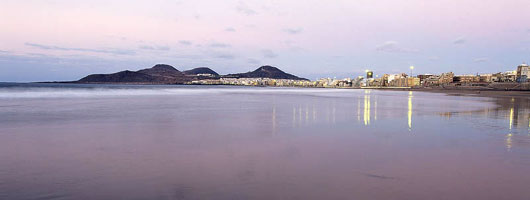
According to a study carried out by Thomas Whitmore, director of research on climatology at the Syracuse University (USA), the city of Las Palmas de Gran Canaria enjoys the best climate in the world. The study analysed the climate of six hundred cities selected for their popularity as a tourist destination.
Las Palmas de Gran Canaria is the capital of the island of Gran Canaria, and shares capital of the Comunidad Autónoma with Santa Cruz de Tenerife.It is the largest city of the archipelago with some 400,000 inhabitants, as well as the centre of the economic and social life of the islands.
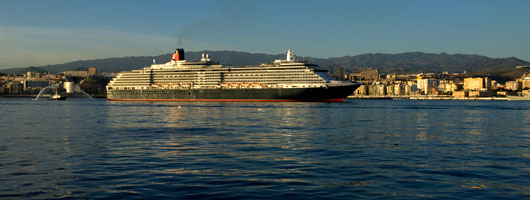
This converts the city into a metropolis in the height of economic, social and cultural development. Las Palmas de Gran Canaria is a modern dynamic city with an industrial and service industry which brings together the major part of the workforce.
The port Puerto de la Luz and Las Palmas has traditionally been the stopover port for ships in the mid-Atlantic, as well as for those between the different transoceanic routes. This is due to the excellent conditions of the bay, its strategic location and the quality of its services.